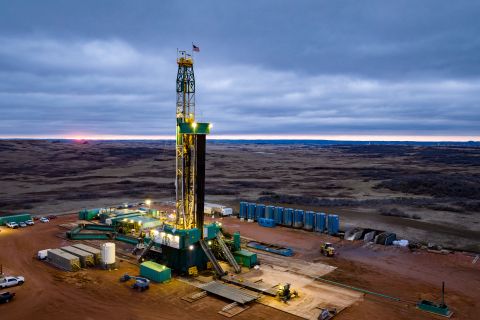Shales have moved to the forefront of exploration in the onshore U.S. The rousing success of the Mississippian Barnett Shale play in North Texas has inspired a sweeping search for other producing shales throughout the country. For most working petroleum geologists, shales are a scientific frontier. Efforts are now centered on classifying shales by their productive potentials and characteristics. At the recent Rocky Mountain Natural Gas energy summit in Denver, co-hosted by the Colorado Oil & Gas Association, the Rocky Mountain Association of Geologists and the Denver Geophysical Society, lectures on shale plays brimmed with participants. John Curtis, a professor at Colorado School of Mines in Golden, Colorado, spoke about shale-gas exploration and current U.S. plays. According to Curtis, 7.4 trillion cubic feet (Tcf) of gas have been produced from shales in the U.S. since the first gas well was drilled in 1821 into Devonian strata in Fredonia, New York. "We're still trying to figure out black shales," he said. Geologists are now looking at every source rock/reservoir in the country that might have enough organic carbon and thermal maturity to generate gas, and enough permeability to be produced economically. Potential targets include the Floyd Shale in Alabama, the Woodford and Barnett in West Texas, the Cane Creek in Utah, and the Monterey in California. "It's a very busy time, and shale gas is being investigated around the country," he said. "It's a combination of price, demand and technology." For more on this, see the September issue of Oil and Gas Investor. For a subscription, call 713-260-6441.
Recommended Reading
E&P Highlights: Sept. 23, 2024
2024-09-23 - Here's a roundup of the latest E&P headlines, including Turkey receiving its first floating LNG platform and a partnership between SLB and Aramco.
Smart Tech Moves to the Hazardous Frontlines of Drilling
2024-10-08 - In the quest for efficiency and safety, companies such as Caterpillar are harnessing smart technology on drilling rigs to create a suite of technology that can interface old and new equipment.
Baker Hughes Defies Nature with an Upgrade to Ol’ Fashioned Cement
2024-10-15 - Baker Hughes’ InvictaSet uses regenerative capabilities to provide operators with a sustainable cement solution that can last for years.
Nabors Takes to Global Expansion in 3Q as Rig Count Shrinks in Lower 48
2024-10-25 - Nabors Industries saw broad growth across key international geographies in third-quarter 2024, with more rig deployments expected.
Seadrill to Adopt Oil States’ Offshore MPD Technology
2024-09-17 - As part of their collaboration, Seadrill will be adopting Oil States International’s managed pressure drilling integrated riser joints in its offshore drilling operations.
Comments
Add new comment
This conversation is moderated according to Hart Energy community rules. Please read the rules before joining the discussion. If you’re experiencing any technical problems, please contact our customer care team.





